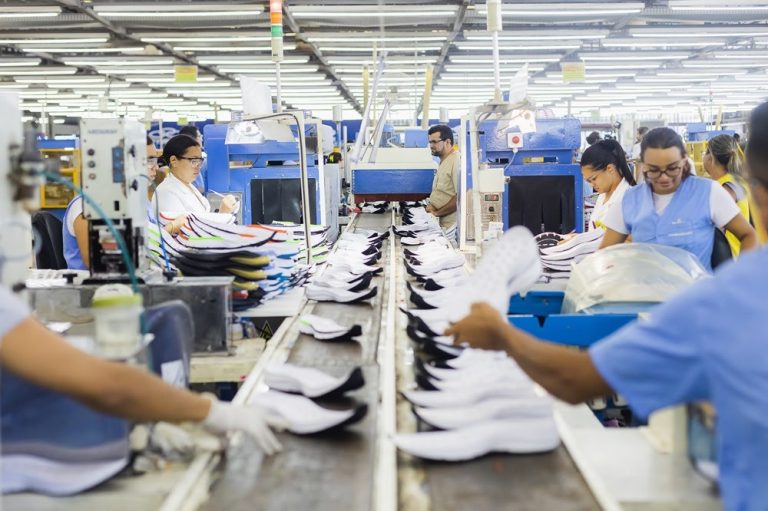São Paulo – Footwear exports from Brazil to the Arab League states posted a decline in the first four months of 2024, said industry association Abicalçados.
Shipments from Brazil to the 22 countries Arab-majority countries in the Middle East and North Africa posted a decline of 31.9% from the same period last year, adding up to USD 9.53 million.
Volume declined by 35.6% year on year, at 897,249 pairs of shoes to the Arab bloc. The good news is that the average price of the shoe price rose 5.6% to USD 10.60, with the largest increases seen in textile footwear (23.3%) and flip-flops (31,6%).
The association believes the numbers reflect a market that is still impacted by the Chinese competitors aggressively trying to get back clients unattended during the acute phase of the covid zero policy in the Asian country that hindered exports.
“So our exports boomed in 2022,” Paola Pontin, coordinator of business at Abicalçados, said during footwear exhibition BF Show. “We took up the demand from countries that weren’t able to access the Chinese product,” she went on. “Now in 2024 we have a landscape that is stabilizing.”
According to Pontin, despite the decline in shipments, the Brazilian footwear remains demanded by the Middle East, with the most popular item being men’s leather sandals. While Pontin was talking to ANBA, a group of Arab buyers representing nine importers from the region were vising the trade show seeking options of the product.
“Several companies offer it, and the buyers seek this product in particular. Simultaneously, they seek other types of shoes, not only leather but synthetic, sport sneakers, which are the global fashion trend aimed at comfort,” said Pontin.
Footwear: Domestic market on the rise
The organization forecasts that footwear exports will end the year posting a 6-9% decline due to the Chinese competition, the lower demand from top buyer United States and recession in second-largest buyer Argentina.
The domestic market, however, should maintain the industry afloat. Rising employment and income levels make Abicalçados project a growth of 2-3.4% in local demand. Output is also expected to grow, by 0.9-2.2%, to 870 million pairs.
Read more:
China’s footwear exports to Arab countries up
According to the association, climate events that hit Brazil’s southernmost state Rio Grande do Sul, the country’s largest manufacturer, are not expected to impact production in 2024.
Although production has been discontinued in some plants, Abicalçados believes that state’s production will rebound to a 90% level by May.
The reasoning is that the rains didn’t have a significant impact on the facilities and affect just 7,000 out of 120,000 footwear industry workers in the state.
Report by Daniel Medeiros, especially for ANBA
Translated by Guilherme Miranda




